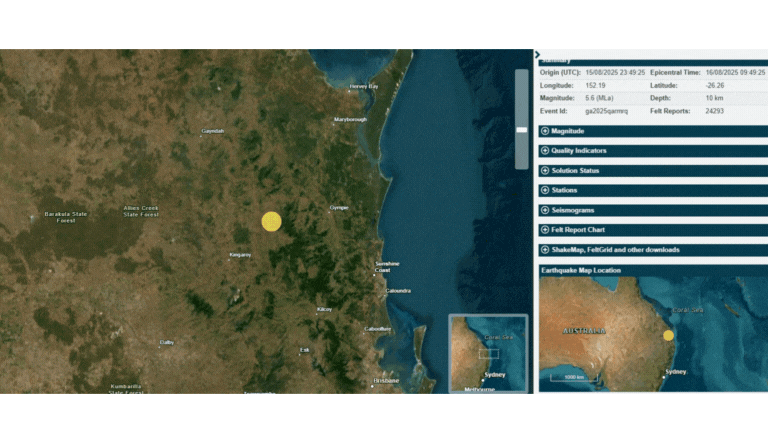Seismic rapid deployment kits rolled out after Kilkivan earthquake
Geoscience Australia deploys six seismic kits after the M5.6 Kilkivan quake
What’s happening?
Geoscience Australia is sending seismic rapid deployment kits to the Sunshine Coast region following the M5.6 earthquake near Kilkivan on Saturday, 16 August 2025. The exact kit locations are still being confirmed.
Since the earthquake occurred, more than 24,000…




